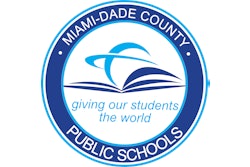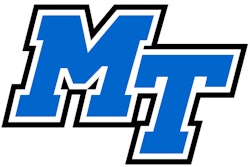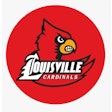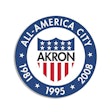Copyright 2017 Richmond Newspapers, Inc.
All Rights Reserved
Richmond Times Dispatch (Virginia)
Metropolitan areas across the United States have shelled out billions of dollars for gold-plated cathedrals to big men in tights.
Talk of a new ballpark for Richmond has all but disappeared in the past few months. Former Mayor Dwight Jones' plans for one imploded, and his successor, Levar Stoney, has trained his focus on the nuts and bolts of local government that Richmond has too long ignored: public safety, sidewalk maintenance, leaf collection.
This is a good thing. To see why, look north to Hartford, Conn.
A recent story in The Wall Street Journal lays out the unfortunate details. Hartford looks somewhat like Richmond: One third of its 124,000 residents live in poverty, and its unemployment rate is twice the state average. The city also has been wrestling with financial difficulties.
Despite that, Hartford has built a new stadium for the AA-level ball club, the Yard Goats, and issued $68.6 million in bonds to do so - even though Dunkin' Donuts paid an undisclosed, but no doubt pretty, sum for the stadium naming rights.
Mayor Luke Bronin has said the park by itself cannot recoup the investment. The city hopes ancillary development nearby will do so: There had been talk of a $350 million mixed-use development - shops and apartments and so on, you've heard it all before. But the development has not materialized.
Richmond's poverty and unemployment numbers look better than Hartford's. But under Jones the city maxed out its credit card; there's almost no debt capacity left. Jones' vision for a new ballpark also relied heavily on ancillary development, both in Shockoe Bottom, where the park was to have been built, and on the Boulevard, where the old ballfield was to have been torn down to make way for "a gleaming, 60-acre complex of apartments, retail stores, restaurants, entertainment and office buildings," as a Times-Dispatch news story put it.
Yet The Diamond still stands, as it has ever since the Richmond Braves left town in a snit almost a decade ago because they weren't getting a new stadium. The Braves ended up in Gwinnett, Ga., which built them the citadel they wanted. "We anticipate it paying for itself from Day One," said the county manager at the time.
Well. As in Hartford, the project ran into cost overruns, and the county had to move $19 million from general-fund revenue to cover the hole. The stadium has been a disaster since its first year, when parking revenue came in at a mere 15 percent of projections.
"Seven years into the experiment that is the Gwinnett Braves," reported the Atlanta Journal-Constitution in 2015, "the numbers make it clear: The county built it. They have not come." Coolray Field has the second-lowest attendance in its league. Just like Hartford, Gwinnett hoped the stadium would provide the catalyst for new development nearby. It hasn't happened.
"None of the planned shops or restaurants has materialized," according to the AJC. And the bond payments for the stadium are bigger than the revenue it brings in. Gwinnett has had to take money meant for other functions to subsidize its money pit.
A fluke? Hardly. Last year, in a story headlined "The Braves Play Taxpayers Better Than They Play Baseball," Bloomberg Businessweek reported on the way the Braves organization has turned public investment by others into its own private profit:
"Over the last 15 years, the Braves have extracted nearly half a billion in public funds for four new homes, each bigger and more expensive than the last. The crown jewel, backed by $392 million in public funding, is a $722 million, 41,500-seat stadium for the major league club set to open next year in Cobb County, northwest of Atlanta. Before Cobb, the Braves built three minor league parks, working their way up the ladder from Single A to Triple A. In every case, they switched cities, pitting their new host against the old during negotiations. They showered attention on local officials unaccustomed to dealing with a big-league franchise and, in the end, left most of the cost on the public ledger. Says Joel Maxcy, a sports economist at Drexel University: 'If there's one thing the Braves know how to do, it's how to get money out of taxpayers.'"
The Braves aren't the only team to have made a business model out of bilking the taxpayers. Many - even most - sports franchises do it. Metropolitan areas across the United States have shelled out billions of dollars for gold-plated cathedrals to big men in tights. The cost of the new stadium for the Detroit Red Wings alone now stands in excess of $730 million, roughly a third of which will come from special taxes.
The money might buy the locals some hometown pride. But it doesn't buy them much of anything else: More than two decades of academic research on the subject find that stadiums produce almost no economic benefit.
As two experts who reviewed the literature, Dennis Coates and Brad Humphreys, put it a couple of years ago: "Economists reach the nearly unanimous conclusion that 'tangible' economic benefits generated by professional sports facilities and franchises are very small; clearly far smaller than stadium advocates suggest and smaller than the size of the subsidies." (And remember: Economists are almost never unanimous about anything.)
Richmond's debate over a new stadium has waxed and waned ever since the Braves left. Right now it is lying dormant. Given what we've learned about the experience in Gwinnett and elsewhere, it should probably stay that way.
[email protected](804) 649-6627Twitter: @ABartonHinkle
Read More of Today's AB Headlines
Subscribe to Our Daily E-Newsletter
Terms and Conditions Privacy Policy



































